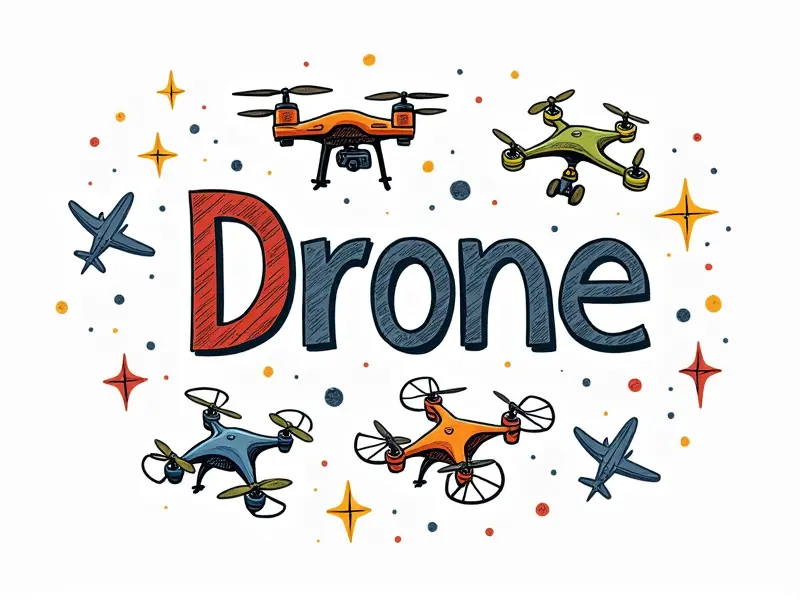How to crash test an FPV drone?

The Ultimate FPV Drone Crash Guide
FPV (First Person View) drones are a thrilling way to experience aerial adventures. However, the risk of crashes is inherent in this hobby due to their high speed and agility. This guide will help you understand how to crash test an FPV drone safely and effectively.
How to Crash Proof Your FPV Drone
To minimize damage during a crash, it's essential to take proactive measures:
- Select durable components: Opt for carbon fiber frames and reinforced propellers that can withstand impacts.
- Add protective guards: Install propeller guards and frame protectors to shield your drone from debris and obstacles.
- Use crash pads: Attach foam or rubber crash pads to the landing gear for added cushioning during hard landings.
Surviving FPV Drone Crashes
Crashing is inevitable, but with proper preparation and techniques, you can minimize damage:
- Practice controlled crashes: Learn to perform soft landings or controlled descents when a crash seems unavoidable.
- Monitor battery levels: Keep an eye on your drone's battery status to avoid running out of power mid-flight, which can lead to uncontrolled crashes.
- Use GPS return-to-home: Enable the return-to-home feature in case you lose control or signal. This ensures a safer landing when a crash is imminent.
Maximizing Durability in FPV Drone Crashes
To enhance your drone's resilience, consider these strategies:
- Upgrade frame materials: Choose frames made from high-strength carbon fiber or aluminum to increase durability.
- Incorporate crash-resistant electronics: Use ruggedized ESCs (Electronic Speed Controllers) and flight controllers designed for harsh conditions.
- Add impact sensors: Install sensors that detect sudden impacts and automatically engage safety features like propeller braking or motor disengagement.
Essential Tips for FPV Drone Crash Tests
Conducting crash tests can provide valuable insights into your drone's performance under stress. Here are some tips:
- Start with controlled crashes: Begin by testing the impact of soft landings and gentle collisions to understand how different components react.
- Increase complexity gradually: Progressively test more severe scenarios, such as high-speed impacts or crashes from significant heights.
- Analyze data: Use flight logs and telemetry data to identify weak points in your drone's design and performance.
Protecting Your FPV Drone from Crashes
Preventive measures are crucial for safeguarding your investment:
- Regular maintenance: Keep your drone clean and well-maintained to ensure optimal performance. Regularly check components like propellers, motors, and batteries.
- Flight planning: Scout the area before flying to avoid obstacles that could cause a crash. Plan routes that minimize risks.
- Use safety features: Enable automatic return-to-home and low-battery alerts to prevent unexpected crashes due to loss of signal or power.
Testing the Limits of FPV Drones
To fully understand your drone's capabilities, it’s important to push its limits safely:
- Simulate real-world scenarios: Test how your drone performs in various conditions such as high winds or low visibility.
- Conduct controlled experiments: Design specific tests to evaluate the impact of different factors, like propeller size or frame material.
- Collaborate with other pilots: Share insights and test results with fellow FPV enthusiasts to gain a broader understanding of crash dynamics.
Crash-Proofing Your FPV Drone
Implement these strategies to make your drone more resilient:
- Redesign components: Modify or replace parts that are prone to damage during crashes. For example, use reinforced propellers and crash-resistant motors.
- Enhance frame design: Incorporate features like integrated crash pads or additional support structures in critical areas of the frame.
- Invest in protective gear: Use specialized accessories designed to protect your drone during crashes, such as propeller guards and impact-resistant foam inserts.
The Art of FPV Drone Crashes
Crashing can be an art form when approached with the right mindset:
- Learn from each crash: Analyze what went wrong and how you can improve your flying skills to prevent future crashes.
- Embrace the learning process: View crashes as opportunities for growth rather than setbacks. Each crash provides valuable data about your drone's performance.
- Prioritize safety: Always prioritize the safety of yourself, others, and your equipment when flying FPV drones.
How to Crash Test an FPV Drone Safely
Safety should be a top priority during crash tests. Follow these guidelines:
- Use protective gear: Wear goggles, helmets, and other safety equipment when conducting crash tests.
- Select safe testing areas: Choose open fields or designated test zones away from people and property.
- Monitor conditions: Ensure that weather conditions are favorable for flying. Avoid testing in high winds or poor visibility.
Ultimate FPV Drone Crash Survival Tips
Here are some final tips to help you survive crashes and protect your drone:
- Stay calm: Keep a clear head during a crash. Panic can lead to poor decision-making.
- Assess damage: After a crash, carefully inspect your drone for any signs of damage before attempting to fly again.
- Document incidents: Record details about each crash, including conditions and circumstances. This information can be invaluable for future improvements.
Conclusion
Crashing is an inevitable part of flying FPV drones, but with the right precautions and strategies, you can minimize damage and enhance your drone's resilience. By following this guide, you'll be better equipped to handle crashes safely and effectively, ensuring that you continue to enjoy the thrill of FPV flying for years to come.

